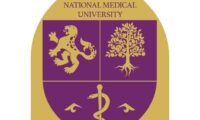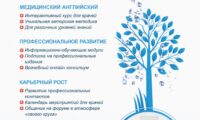Received: 05.12.2023 Accepted: 31.01.2024 Published online: 29.02.2024
UDC: 617-089
DOI 10.53511/PHARMKAZ.2024.17.89.007
A.K. Zhashkeyev1, SH.D. Sergazy2, ZH.SH.Zhumadilov2
1Karaganda Medical University, Karaganda, Kazakhstan, https://orcid.org/0000-0003-2695-4569
2National Laboratory Astana, Nazarbayev University,Astana,Kazakhstan, https://orcid.org/0000-0002-6030-620X
2National Laboratory Astana, Nazarbayev University,Astana,Kazakhstan, https://orcid.org/0009-0001-0433-8290
STUDY OF DIETARY REMODELING OF THE INTESTINAL MICROBIOTA BY GRAPE
POLYPHENOLS AT THE LEVEL OF TRIMETHYLAMINE N-OXIDE (TMAO)
IN PATIENTS WITH ACUTE CORONARY SYNDROME WITH ELEVATION
OF THE SEGMENT ST
Resume: The main cause of mortality and disability in the adult population of our planet is cardiovascular
diseases caused by atherosclerosis. The relevance of research into new methods of treating atherosclerosis
is only increasing. In addition to dyslipedemia, infections and inflammation, new predictors of atherogenesis
are being sought, and one of them is the level of trimethylamine N-oxide (TMAO). Many large studies
have shown that circulating TMAO levels correlate with the development of atherosclerosis. In turn, the
formation of TMAO depends on the state of the intestinal microbiome. That is, the stages of development
of atherosclerosis can be influenced by changes in the intestinal microbiome.
Purpose: Based on domestic and foreign scientific publications, to determine the effect of dietary remodeling
of the gut microbiota by grape polyphenols on trimethylamine N-oxide (TMAO) levels in patients with STsegment elevation acute coronary syndrome.
Results and conclusions: It was revealed that in patients with STEMI, the use of the prebiotic Kainar
with grape polyphenols changes the concentration of TMAO in the blood. It was confirmed that there were
statistically significant differences in TMAO values in the control group and the group taking Kaynar after 3
months and after 12 months.
Keywords: trimethylamine N-oxide (TMAO), ST-segment elevation myocardial infarction (STEMI), cardiovascular
disease (CVD), Kaynar.
REFERENCES
1 MechanicO.J., Gavin M., Grossman Sh. Acute Myocardial Infarction Treasure Island (FL) // StatPearls Publishing. — 2023. https://www.ncbi.nlm.nih.gov/
books/NBK459269/
2 Han Y., Gong Z., Sun G., Xu J., Qi C., Sun W., Jiang H., Cao P.Ju H.Dysbiosis of Gut Microbiota in Patients With Acute Myocardial Infarction // Front. Microbiol.
– 2021; 12: 680101. doi: 10.3389/fmicb.2021.680101
3 Li N., Zhou J., Wang Y. Association between trimethylamine N-oxide and prognosis of patients with acute myocardial infarction and heart failure //ESC Heart
Fail. – 2022; 9(6): 3846-3857.
4 Li N., Wang Y., Zhou J. Association between the Changes in Trimethylamine N-Oxide-Related Metabolites and Prognosis of Patients with Acute Myocardial
Infarction: A Prospective Study //J Cardiovasc Dev Dis.– 2022; 9(11): 380. doi:10.3390/jcdd9110380
5 Cai J.J., Jiang H. Application Potential of Probiotics in Acute Myocardial Infarction //CVIA. – 2022; 7(1): 19. doi: 10.15212/CVIA.2022.0019
6 Cebova M., Pechanova O. Protective Effects of Polyphenols against Ischemia/Reperfusion Injury // Molecules. — 2020;25(15):3469. doi: 10.3390/
molecules25153469.
7 Hedayati N., Yaghoobi A., Salami M., Gholinezhad Y., Aghadavood F., Eshraghi R., Aarabi M.H., Homayoonfal M., Asemi Z., Mirzaei H., Hajijafari M., Mafi
A., Rezaee M. Impact of polyphenols on heart failure and cardiac hypertrophy: clinical effects and molecular mechanisms //Front Cardiovasc Med.– 2023;
10:1174816. doi: 10.3389/fcvm.2023.1174816
8 McCaffrey T.A., Toma I., Yang Z., Katz R., Reiner J., Mazhari R. Rna sequencing of blood in coronary artery disease: Involvement of regulatory t cell
imbalance //BMC Med Genomics.– 2021; 14(1): 2-10.doi: 10.1186/s12920-021-01062-2.
9 Virani S.S., Alonso A., Benjamin E.J., Bittencourt M.S., Callaway C.W., Carson A.P. Heart disease and stroke statistics-2020 update: a report from the american heart association //Circulation.– 2020; 141(9): 757-763.doi: 10.1161/CIR.0000000000000757.
10 Puelacher C., Gualandro D.M., Glarner N., LuratiBuse G., Lampart A., Bolliger D., Steiner L.A., Grossenbacher M., Burri-Winkler K., Gerhard H., Kappos
E.A., Clerc O., Biner L., Zivzivadze Z., Kindler C., Hammerer-Lercher A., Filipovic M., Clauss M., Gürke L., Wolff T., Mujagic E., Bilici M., Cardozo F.A., Osswald
S., Caramelli B., Mueller C. BASEL-PMI Investigators. Long-term outcomes of perioperative myocardial infarction/injury after non-cardiac surgery //Eur Heart
J.- 2023; 44(19): 1690-1701.
11 Sazgary L., Puelacher C., LuratiBuse G., Glarner N., Lampart A., Bolliger D., Steiner L., Gürke L., Wolff T., Mujagic E., Schaeren S., Lardinois D., Espinola
J., Kindler C., Hammerer-Lercher A., Strebel I., Wildi K., Hidvegi R., Gueckel J., Hollenstein C., Breidthardt T., Rentsch K., Buser A., Gualandro D.M., Mueller
C. BASEL-PMI Investigators. Incidence of major adverse cardiac events following non-cardiac surgery //Eur Heart J Acute Cardiovasc Care.– 2020; 10(5):
550–558.
12 Patrignani P., Tacconelli S., Bruno A. Gut microbiota, host gene expression, and aging // J. Clin. Gastroenterol. -2014; 48(1): 28–31
13 Xu H., Yang F., Bao Z. Gut microbiota and myocardial fibrosis. Eur J Pharmacol.– 2023; 940:175355. doi: 10.1016/j.ejphar.2022.175355.
14 Liu H., Chen X., Hu X., Niu H., Tian R., Wang H. Alterations in the gut microbiome and metabolism with coronary artery disease severity //Microbiome. –
2019;7:68 – 78.doi: 10.1186/s40168-019-0683-9
15 Yoshida N., Emoto T., Yamashita T., Watanabe H., Hayashi T., Tabata T., Bacteroidesvulgatus and bacteroidesdorei reduce gut microbial lipopolysaccharide
production and inhibit atherosclerosis //Circulation. – 2018; 138: 2486–2498.
16 Dong C., Yang Y., Wang Y., Hu X., Wang Q., Gao F., Sun S., Liu Q., Li L., Liu J., Tang Y., Zhang S., Wu C., Zhu H. Gut microbiota combined with metabolites
reveals unique features of acute myocardial infarction patients different from stable coronary artery disease //J Adv Res.– 2023; 46: 101-112.
17 Liu M., Wang M., Peng T., Ma W., Wang Q., Niu X., Hu L., Qi B., Guo D., Ren G., Geng J., Wang D., Song L., Hu J., Li Y. Gut-microbiome-based predictive
model for ST-elevation myocardial infarction in young male patients // Front Microbiol. – 2022; 13: 1031878. doi: 10.3389/fmicb.2022.1031878.
18 Zhao S., Tian Y., Wang S., Yang F., Xu J., Qin Z., Liu X., Cao M., Zhao P., Zhang G., Wang Z., Zhang Y., Wang Y., Lin K., Fang S., Wang Z., Han T., Tian
M., Yin H., Tian J., Yu B. Prognostic value of gut microbiota-derived metabolites in patients with ST-segment elevation myocardial infarction //Am J ClinNutr.
– 2023; 117(3): 499-508.
19 Ramírez-Macías I., Orenes-Piñero E., Camelo-Castillo A., Rivera-Caravaca J.M., López-García C., Marín F. Novel insights in the relationship of gut
microbiota and coronary artery diseases // Crit Rev Food SciNutr.– 2022; 62(14): 3738-3750.
20 Mansuri N.M., Mann N.K., Rizwa., Wei Z., Guo M., Chen F., Qiao S., Hu J., Wang J., Chen H., Bao X., Mu D., Sun X., Xu B., Xie J. Heart-gut microbiota
communication determines the severity of cardiac injury after myocardial ischaemia/reperfusion //Cardiovasc Res.– 2023; 119(6): 1390-1402.
22 Rana A., Samtiya M., Dhewa T., Mishra V., Aluko R.E. Health benefits of polyphenols: A concise review //J Food Biochem. – 2022; 46(10): — e14264. doi:
10.1111/jfbc.14264.


































